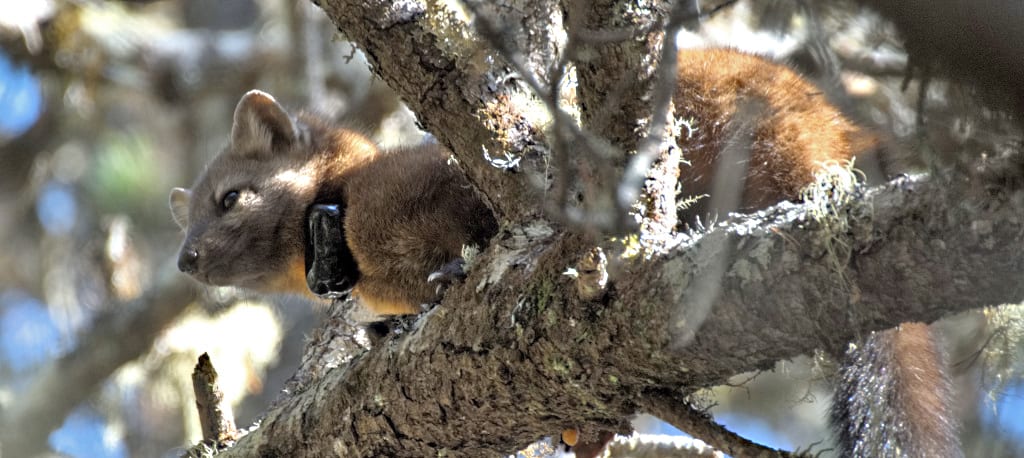Share this article
Threatened martens enjoy Oregon beach solace
A threatened species of martens seems to have opted for the Oregon beach life, with plenty of food and a lack of predators.
The Pacific marten (Martes caurina) typically lives in mature forest areas along the Pacific Northwest. A subspecies, the Humboldt marten (Martes caurina humboldtensis), was previously believed to be extinct until a small population was discovered in the 1990s in Northern California. Researchers later found a small population of martens in the Oregon Dune National Recreation Area were Humboldts based genetic testing of martens killed on a nearby highway and extensive surveys.
This beach area doesn’t have the type of old forest other martens are associated with, but instead is covered with shrubs. Researchers wanted to learn how many of the martens, currently under review for listing under the federal Endangered Species Act, lived in this area, and to get a better understanding of why the animals lived in an area that seemed so different from most marten habitat.
“It’s a strange thing to do for martens,” said Taal Levi, a wildlife professor at Oregon State University and one of the authors of a study published on the small population in PLOS ONE. “Normally, they are either a very high elevation species or a high latitude species.”
The researchers trapped martens and used tracking dogs to collect and analyze 98 marten scat samples to figure out whether berry-producing shrubs might be one of the main draws. They also set a number of camera traps both in the dunes and in mature forest just to the east of the highway where martens are sometimes struck by vehicles. Both methods were previously discovered to be the most effective way to track these animals by Levi’s co-author and TWS member Katie Moriarty, who studies martens. Moriarty is a senior research scientist with the National Council for Air and Stream Improvement, Inc., a scientific association serving the forest products industry.
They found about 60 Humboldt martens on the west side of the highway, split nearly in half by the Umpqua River — an update from a previous study that looked at the numbers of Humboldt martens.
“It’s a fairly small population with a reasonable chance of extinction,” Levi said.
The scat revealed that the Humboldt martens’ diets differed from other martens — Humboldt martens in the dunes ate more birds. And based on the camera evidence, which captured photos of all kinds of animals, the beach area seemed to have more abundant marten prey than the forest area to the east.
The beach may also be safer for martens. Camera traps revealed that the mature forests to the east played host to bobcats (Lynx rufus) — an important marten predator.
While the forest to the east has lots of tree cover, it actually has less shrub cover that martens may use to hide from bobcats and raptors that might prey on them. Martens are also omnivores, consuming plenty of berries from these shrubs as well. Levi said that this vegetation could be the key to why martens prefer the dunes area to the forests to the east, but more research is needed to confirm this.
“They’re using the shrubs as a nutritional resource and also as protection against predators,” he said.
But a more robust understanding of the factors that allow martens to thrive in the dunes is critical for future conservation decisions, Levi said. That’s particularly important, he said, given the U.S. Forest Service’s plans to bulldoze the dunes in an effort to restore the free moving sands that existed before nonnative grass and pines were planted to stabilize the sand.
“That would eliminate the marten,” Levi said.
The project’s website says the restoration project will take the martens into account. “Forest staff and partners will be seeking opportunities to contribute to the recovery of this species,” it says.
Header Image:
A male Humboldt marten in the Oregon Dunes wears a radio collar attached by researchers.
©Mark Linnell, U.S. Forest Service Pacific Northwest Research Station








